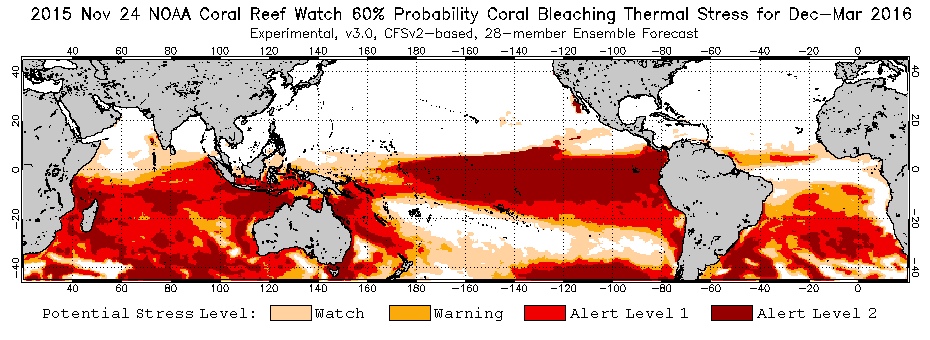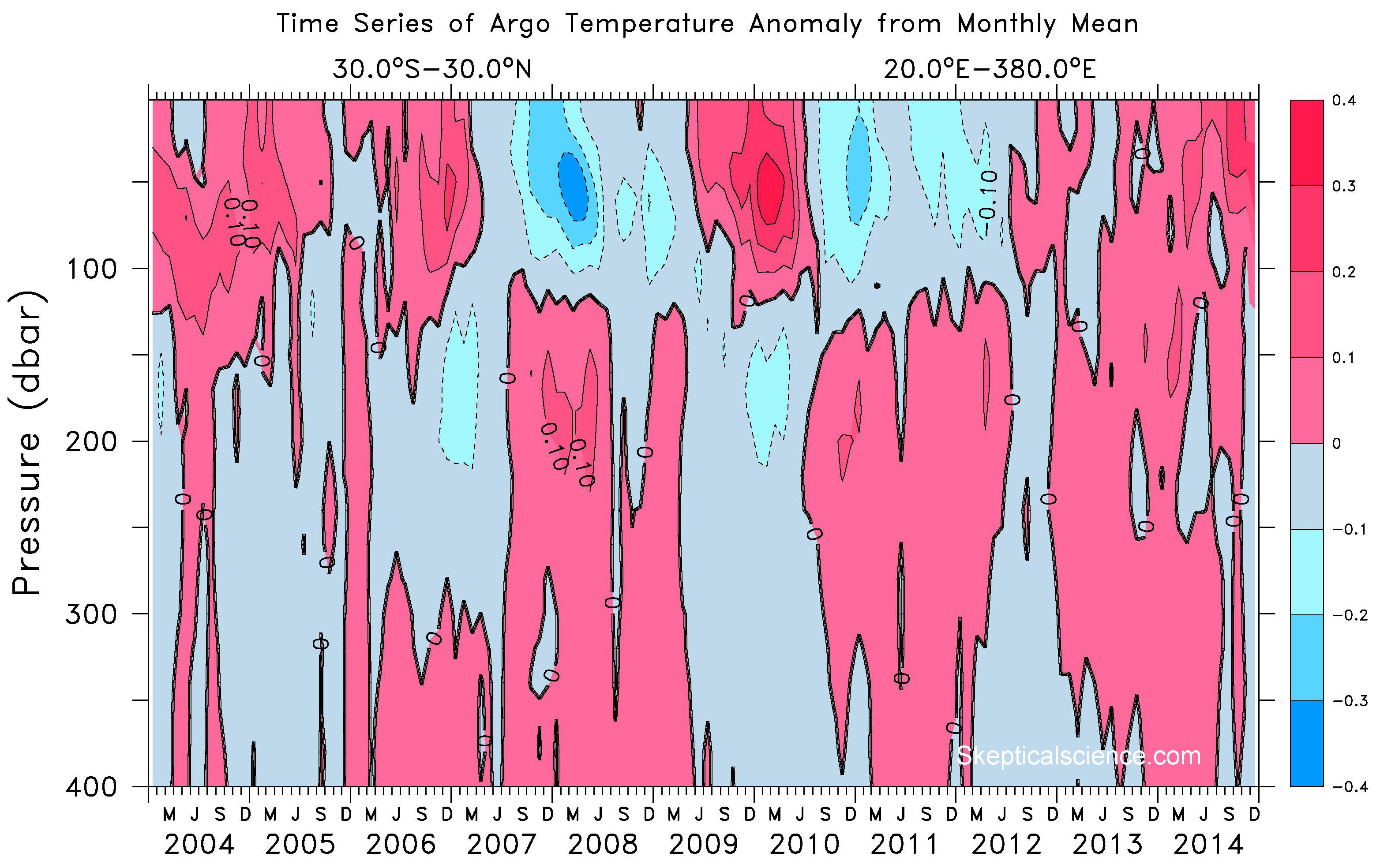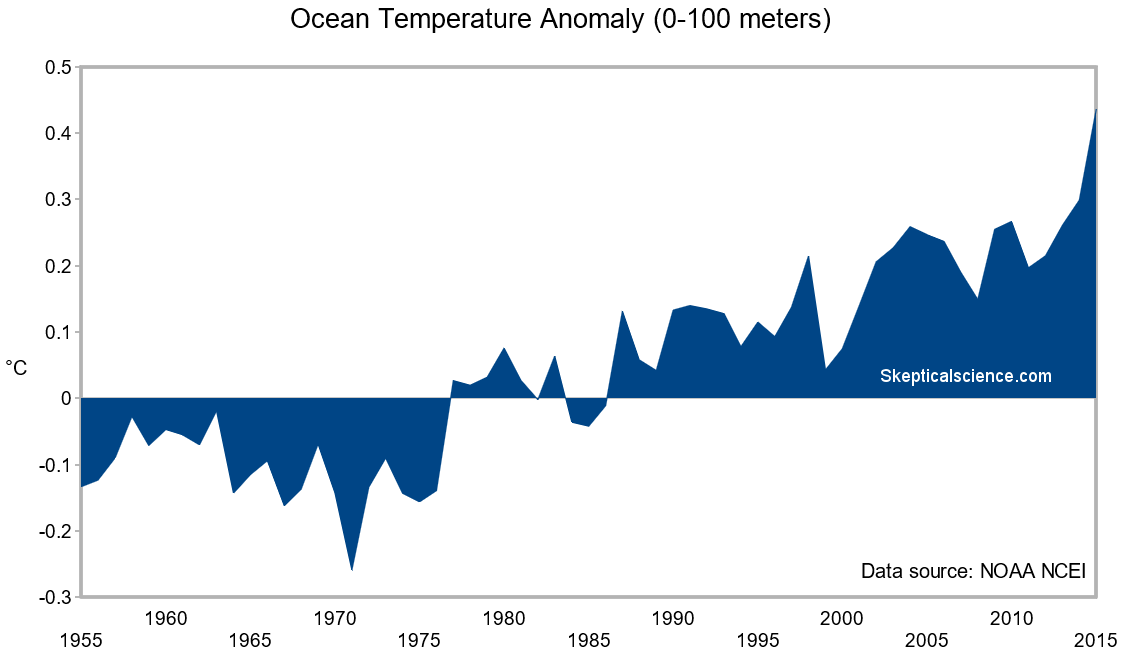Ocean Heat Comes Back to Haunt Coral Reefs
Posted on 9 June 2016 by Rob Painting
As I predicted in August last year, the powerful El Niño of 2015-2016, in tandem with global warming, has seen a worldwide coral bleaching event unfold across the tropics. On Australia's Great Barrier Reef the bleaching is easily the worst on record with 93% of reefs experiencing bleaching ranging from minor to severe. However we won't know the full extent of this global event until the end of the year, or perhaps 2017, when the bleaching is expected to have ended. Reports throughout the Pacific and Indian Ocean, however, hint that it could be the worst global bleaching event on record too, with a high rate of mortality likely.
My prediction was rather stating the obvious as the oceans are warming and research in the last few decades has established that reef-building corals are near a high temperature tolerance threshold. Summer, combined with El Niño, is when sea surface temperatures in the tropics of each hemisphere tend to peak. As explained in my previous post, this has to do with year-to-year fluctuations in the rate at which the subtropical cell in the ocean transports heat poleward (meridionally) out of the tropics. The relaxation of the westward blowing trade winds, which accompanies El Niño, also allows heat buried in the subsurface ocean of the western tropical Pacific to surface and become entrained in the ocean's surface circulation. Accordingly, the climate model-based projections at NOAA's Coral Reef Watch were warning of thermal stress on the Great Barrier Reef, and elsewhere, as early as November 2015.

Figure 1 - Projected coral reef thermal stress (60% probability) for the period Dec 2015 to March 2016. Image from NOAA's Coral Reef Watch.
Although it only extends up to December 2014, and therefore excludes the 2015-2016 El Niño, the quality-controlled data provided by the Argo system of autonomous floats is able to provide a clearer picture of how this ENSO fluctuation affects the surface layers in the latitudes where almost all coral reefs reside - 30°N to 30°S. See Figure 2.

Figure 2 - Time series of the temperature anomaly from the monthly mean for the (approx) 0-400 meter ocean depth and covering the latitudes from 30°N-30°S. Image created by Rob P from the Global Marine Argo Atlas.
One dbar (decibar) of pressure is approximately equal to the one metre depth in the ocean, so the image reveals that the upper 100 meters of ocean 30 degrees either side of the equator are anomalously cool during the La Niña years of 2007-2008 and 2010-2012, which is consistent with scientific expectations. Conversely, the upper 100 meters of ocean there is anomalously warm in the weak-to-moderate El Niño years of 2004-2005, 2005-2006 and 2009-2010 - again consistent with what we would expect.
The multi-decadal fluctuation known as the Interdecadal Pacific Oscillation (IPO) is a large contributor to the respite from bleaching that coral reefs have enjoyed in the early part of the 21st century because the negative phase of the IPO is dominated by La Niña. Now that it appears the IPO may have moved toward its positive (El Nino-dominant) phase we should see more frequent and intense bleaching events in the near-future. Of course, as the upper ocean layers continue to accumulate heat (see Figure 3), coral bleaching will ultimately no longer be an ENSO-related event but become a regular occurrence. Indeed recent, and as yet unpublished, research indicates the sea surface temperatures which caused such devastating bleaching and mortality on the Great Barrier Reef in 2016 will be the average there in about 18 years, but that's a subject for another day.

Figure 3 - The temperature anomaly for the 0-100 meter layer of the global ocean from 1955-2015. Image created by Rob P from data provided by NOAA NCEI.































 Arguments
Arguments






























Comments